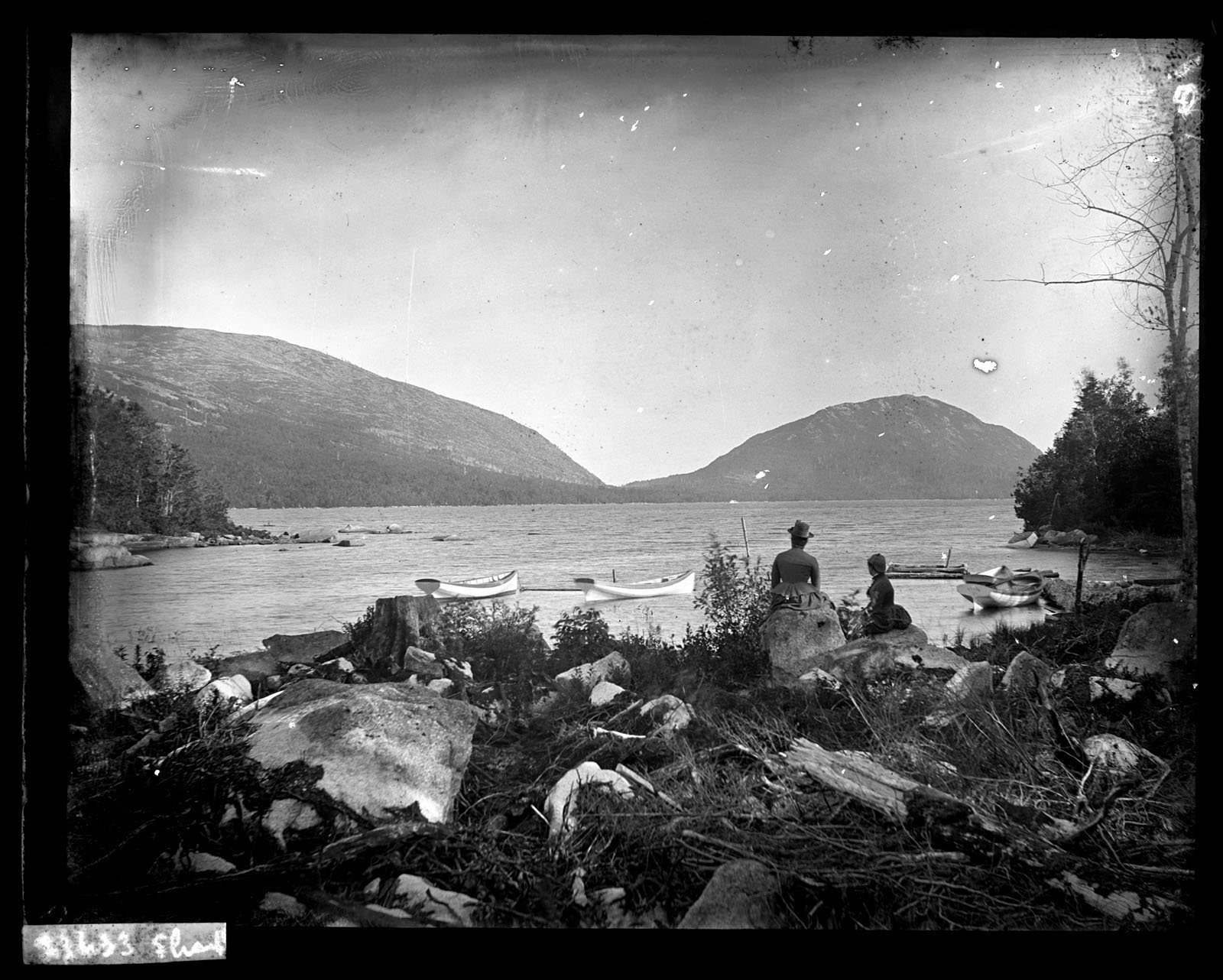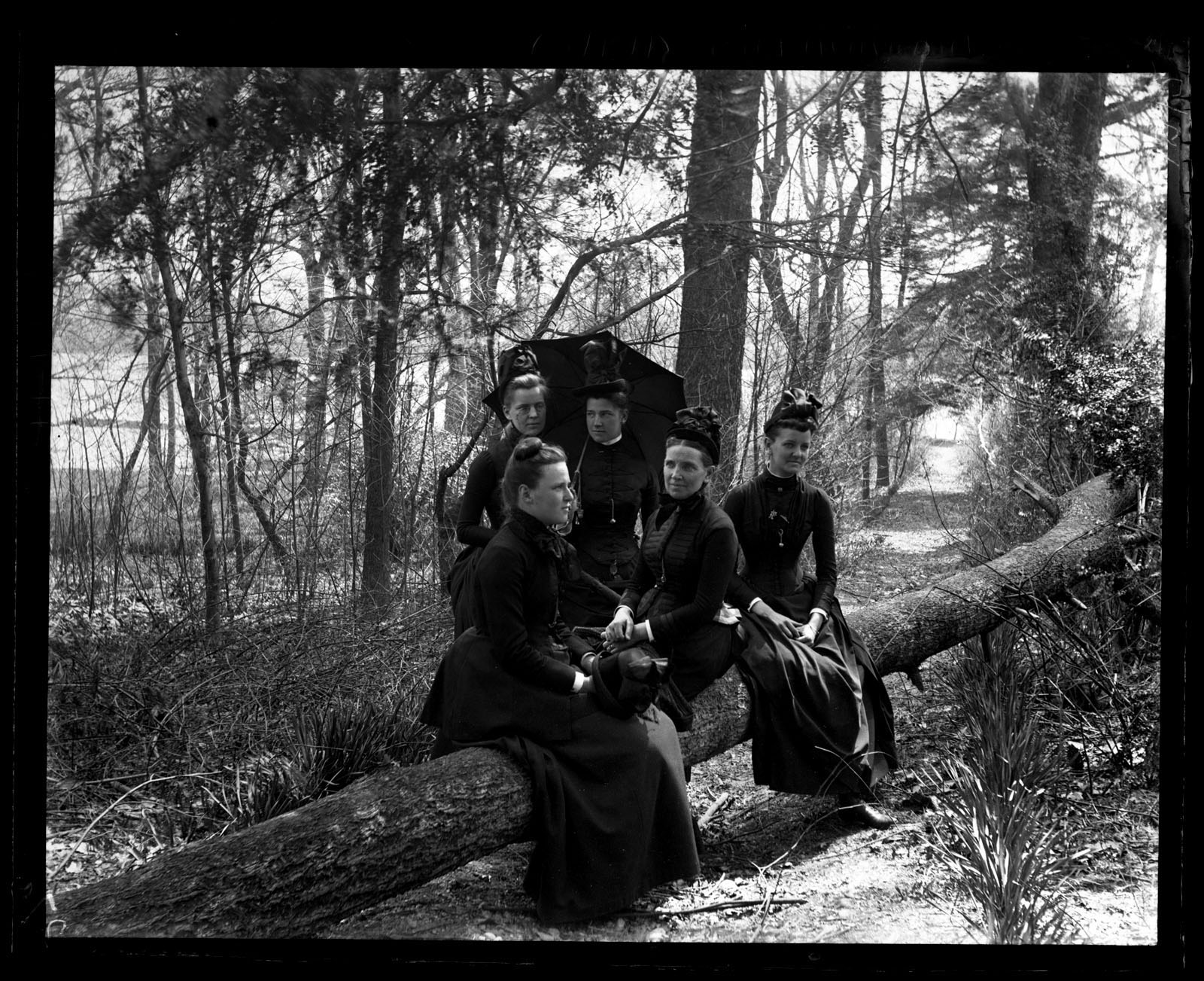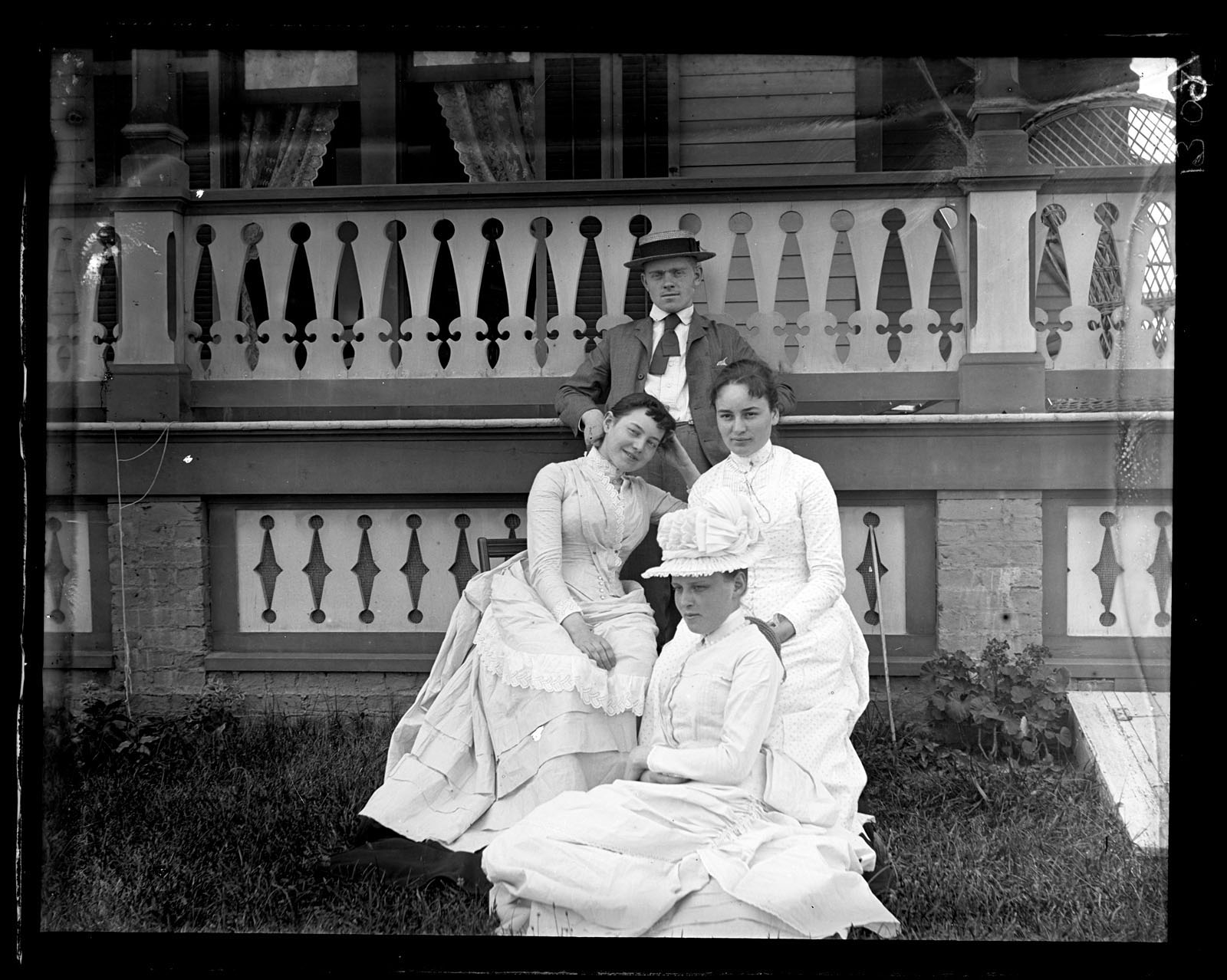Triumphs and Defeats of Family Research
When organizing family photographs, many of us take a less-is-more approach. I might write on the back of a photo, for instance, “Margaret and Bill, Christmas day.” With my family, though, this immediately poses questions such as: Are these my Aunt and Uncle or my cousins? We can probably tell based on the ages of the people in the photograph. However, if I label a photograph “Aunt Kathy,” am I talking about the aunt on my mother’s side or the similarly-aged aunt on my father’s side? These are just some of the challenges that arise in figuring out who exactly is in photographs with general identifications. Some families, like mine and Marriot C. Morris’, recycled names across generations, making these challenges even worse. While working with the Marriott C. Morris Collection, I have created extended family trees to capture all of Morris’ relations that appear in his photographs and to see who is related to whom. Sometimes, the solution is easy to find. Other times, there are no clear answers to my questions.
Case 1: Elder vs. Younger
This negative shows two women, identified by Morris as Hannah Rhoads and Anna Tatnall sitting on a cliff edge. When I first began working on this record, I immediately recognized “Tatnall” as a middle name for Morris family members. One thing that the Morris family did frequently was use the last names of older generations or distant relations as middle names for their children. This has made it much easier to identify links to other families. After recognizing Anna’s name, I first searched the family trees I created. When given only first or middle names, I can often find the right family member in this way. The only one who seemed close was Anna Tatnall Canby, Marriott Morris’ aunt. Although Anna’s face was not visible in the negative, I had my doubts that she could be an older woman. The negative was taken on a trip to Mount Desert Island in Maine, and other images from this trip almost exclusively feature younger people. Additionally, Morris did not usually label his photos with first and middle names only; I had to assume “Tatnall” was Anna’s last name. Instead, I realized I might have to go backwards in time. The last person on the family tree I devised to have the last name “Tatnall” was Morris’ great-grandmother Ann Tatnall. By tracing her family line, I was able to find Anna Canby Tatnall, Morris’ second cousin once removed. This search was relatively easy, thanks in part to the extensive Morris family information provided to us by the family and Robert Moon’s book documenting the generations of Morris’ since the 1700s.
Case 2: The Case of two Minnies
Known as “the two Minnies” in some of Morris’ photographs, Minnie Kimber and Minnie Tyson Shoemaker proved to be a difficult case. My usual first strategy for a non-Morris is to look them up online through websites like Ancestry and Google books. Unfortunately, while I found Minnie Kimber, no Minnie Tyson Shoemaker presented herself. Another strategy I use is to look up the proper names represented by nicknames and redo my searches with them. However, when I tried to find the origin of Minnie, I found over six possible names, including Mary, one of the most common names of all! As seen in this image with three other Shoemaker women, including Minnie Shoemaker Kimber, I was sure that Minnie Tyson must be related to this family. But how? Thankfully, after talking over my frustration with coworkers, Reference Librarian Connie King was able to find the Shoemaker family in a copy of the North American Family Histories online. Turns out, Minnie Kimber’s brother Samuel married a Mary Dawson Tyson who fit the age range suggested by the women in the negative. Books detailing the histories of significant families are probably the most useful source for me when compiling my family trees and identifying these unknown people. Often times, the names attached to the images are less helpful than the names of their family members in the genealogies!
Case 3: Who is Helen Morris?
Not every story can be a success. Helen Morris seemed like she would be easy to identify. Based on the images we have of her, I am able to estimate her age as being close to that of Morris’ sister Elizabeth Canby Morris. However, this information didn’t actually help much. In the family history books available to me, I found four Helens, all rejected right away since they were born after the dates on the negatives. Could Helen perhaps have married into the Morris family? With this idea in mind, I looked for any other mentions of Helen and found one: Helen Campbell Morris (1871-1901). She was married to Morris’ third cousin James Cheston Morris. With her age closely matching Elizabeth Morris’, this seemed like the answer! Until I realized that another crucial date did not support my conclusion. Helen and James’ married in 1892. The images we have of Helen Morris range from 1888 to 1889. Looking back through Morris’ photographic journals, he clearly identifies Helen as a Morris, even at these early dates. Could Morris have gone back and added this information after the marriage? Unfortunately, I cannot say for sure that Helen Morris is Helen Campbell Morris. While this is a very strong possibility, there is always the chance that Helen belonged to another branch of the Morris family.
Struggling with these identifications has made me consider my own photograph-labeling process. In 100 years, will anyone be able to tell who is in my photos? Will the repetition of names in my family stymie future researchers? When first and last names aren’t specific enough, how much detail should we go into? Through my experiences, I have decided on new general rules to follow: include first and last names, include the relationship to me, and group photos together based on related family members. With these clues, I hope future researchers will be able to do the types of investigations I have been able to do myself for the Morris images to find the familial relations of those who have long since left us.
Em Ricciardi, Curatorial and Reading Room Assistant

![Sargent Mt. & another Mountain from end of Eagle Lake. Hannah Rhoads & Anna Tatnall in foregr[oun]d. [Mount Desert Island, ME] [graphic]. Sargent Mt. & another Mountain from end of Eagle Lake. Hannah Rhoads & Anna Tatnall in foregr[oun]d. [Mount Desert Island, ME] [graphic].](https://librarycompany.org/wp-content/uploads/Sargent-Mt.-another-Mountain-from-end-of-Eagle-Lake.-Hannah-Rhoads-Anna-Tatnall-in-foreground.-Mount-Desert-Island-ME-graphic.-748x600.jpg)

![Group on fallen tree. Bartram's Garden. Mrs Shoemaker, Bird & Minnie Tyson Shoemaker, Minnie Kimber & Bess [graphic]. Group on fallen tree. Bartram's Garden. Mrs Shoemaker, Bird & Minnie Tyson Shoemaker, Minnie Kimber & Bess [graphic].](https://librarycompany.org/wp-content/uploads/Group-on-fallen-tree.-Bartrams-Garden.-Mrs-Shoemaker-Bird-Minnie-Tyson-Shoemaker-Minnie-Kimber-Bess-graphic.-738x600.jpg)

![Group in front of our cottage [Avocado, Sea Girt]. Bess, Helen Morris, Fannie Garrett & Fred Strawbridge [graphic]. Group in front of our cottage [Avocado, Sea Girt]. Bess, Helen Morris, Fannie Garrett & Fred Strawbridge [graphic].](https://librarycompany.org/wp-content/uploads/Group-in-front-of-our-cottage-Avocado-Sea-Girt.-Bess-Helen-Morris-Fannie-Garrett-Fred-Strawbridge-graphic.-753x600.jpg)


